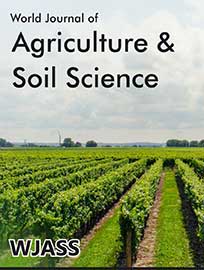 Mini Review
Mini Review
Side Effects of Insecticides on Beneficial Insects: A Practical Tool to Identify Organic Agroecosystems
JA Gómez Guzmán and R González Ruiz*
Department of Animal Biology, Vegetable Biology And Ecology, Jaen University, Spain
Corresponding AuthorR González Ruiz, Department of Animal Biology, Vegetable Biology And Ecology, Jaen University, Spain.
Received Date: December 05, 2019; Published Date: December 09, 2019
Abstract
In order to achieving sustainability, integrated pest management (IPM) represents a remarkable improvement over previous conventional approaches, so optimizing the effectiveness of the entomophagy activity of natural enemies of pests is a determining factor. IPM does not necessarily require the suppression of insecticides, but rather affects the need to reduce their dependence, by eliminating unnecessary applications. However, the correct integration of chemical and biological control is essential part of sustainable pest management, for which a correct interpretation of the impact of insecticide treatments, is required. In IPM agroecosystems a great proportion of non-target insects are mainly affected by sublethal dose/ concentration values. A sublethal dose/concentration defined as inducing no apparent mortality in the experimental population. The effects induced have been described affecting biology, physiology, or behavior of individuals or populations that survive to the exposure to a toxicant at lethal or sublethal dose/concentration. The set of behavioral modifications provides insects with an escape mechanism from the toxic effects of pesticides, which has been called behavioral resistance, as the first barrier or detoxification mechanism.
For the correct integration of insecticide applications and biological control, the influence of the insecticide side effects on beneficial insects should be evaluated. Recent studies suggest that, as in both conventional olive / IPM orchards, these species frequently show behavioral resistance, while in organic crops, their populations lack it. There seems to be a close relationship between the application of insecticides and the development of behavioral resistant populations. This finding has suggested establishing a practical procedure based on the realization of smallscale field applications, to subsequently monitor beneficial insect reactions, useful for identifying ecological agroecosystems. The implications of the implementation of this new methodology are discussed.
Keywords: Sublethal effects; Insecticides; Behavioral resistance; Beneficial insects; Olive pests; Predators; Parasitoids; Conventional management; IPM; Organic management
-
JA Gómez Guzmán, R González Ruiz. Side Effects of Insecticides on Beneficial Insects: A Practical Tool to Identify Organic Agroecosystems. World J Agri & Soil Sci. 4(1): 2019. WJASS.MS.ID.000576.
-

This work is licensed under a Creative Commons Attribution-NonCommercial 4.0 International License.






